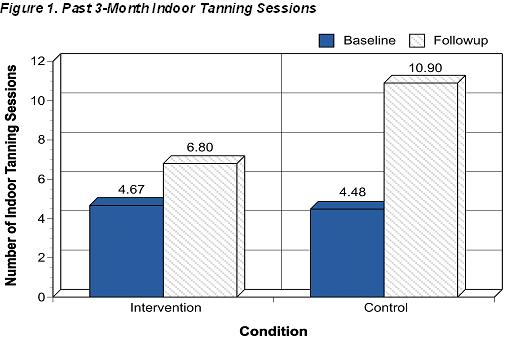
Example of a booklet to be distributed to a target population as part of an Appearance-Based Intervention
Appearance Based Intervention
This intervention utilized a six section long booklet that touched specific issues and risks involved with tanning bed use. It also included a brief history and and a discussion of the norms that have developed around tanning. The focus of this study was to increase awareness about the issues with tanning bed use and change the behaviors surrounding the activity. The Health Belief Model seemed to be utilized to good effect in this intervention as each of the sections below highlights. In the study, female university students were selected if they scored a 5 out of 7 or higher on an test measuring intentions to tan in the next year. Ages 17-21 were included with a mean age of 18.6 in the participants. Follow up for the study included a survey of opinions about tanning.
The Booklet
Section 1: Discussed the history and addressed the norms and perception of tanning that has developed in our culture. This seems to address some of the perceived barriers that is part of the HBM. Personal perception is a big issue in indoor tanning which is what this section seems to address to a degree.
Section 2: Susceptibility is partially addressed in this section because it looks at who tanning beds target and it also might provide further information about perceived barriers by further covering norms and body image and media influences.
Section 3: Severity is addressed by this section because it looks into the effects of UV radiation on skin and the damage done to it. This section specifies the carcinogenic effects of the UV radiation the tanning beds emit.
Section 4: Builds onto the previous section by specifically focusing on severity with relation to indoor tanning. Section 4 also target the audiences perceived susceptibility to skin cancer.
Section 5: Provides suggestions to reduce harm which would fit the perceived benefit section of the HBM. This section specifically focuses on tanning abstinence as a way to reduce a persons risk of developing skin cancer.
Section 6: This section emphasizes self-efficacy by suggesting other things you can do to reach the appearance that you want while avoiding tanning bed use.
The Effect:
This study specifically focused on the population at highest risk which was young women but in theory anyone could benefit from this intervention if provided with the educational resources that the women in the study were provided. The intervention group showed significantly less indoor tanning in the following three months than the control group. Intention to use indoor tanning facilities also decreased in the intervention group.
In the picture above it is important to note that tanning bed use at baseline was measured at a time in the year where use is typically at its lowest while the follow up was measured at time in the year when tanning bed use is typically at its highest.
